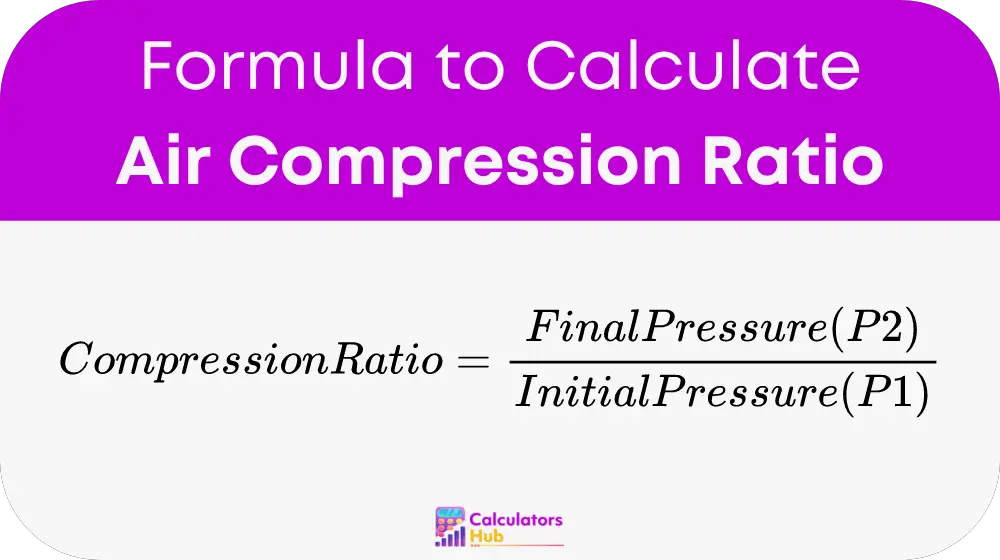The Air Compression Ratio Calculator is an essential tool for mechanical engineers, HVAC technicians, and professionals involved in compressor design and maintenance. It provides a simple yet powerful method for calculating the ratio between the pressure at the compressor outlet and the inlet. Understanding this ratio is crucial for optimizing compressor efficiency, ensuring safety, and predicting the performance of compression systems. The tool allows users to assess whether a compressor meets the specific requirements of their system and helps in troubleshooting performance issues.
Formula of Air Compression Ratio Calculator
To calculate the air compression ratio accurately, follow these detailed steps:
- Measure the absolute pressure at the compressor outlet (P2) in Pascals (Pa).
- Measure the absolute pressure at the compressor inlet (P1) in Pascals (Pa).
The formula to calculate the compression ratio is:

This straightforward calculation provides valuable insights into the efficiency and capability of a compressor.
General Terms Table
| Term | Definition |
|---|---|
| Compression Ratio | The ratio of the final pressure to the initial pressure in a compressor. |
| Final Pressure (P2) | The absolute pressure at the compressor outlet, measured in Pascals (Pa). |
| Initial Pressure (P1) | The absolute pressure at the compressor inlet, measured in Pascals (Pa). |
| Pascal (Pa) | The SI unit of pressure, equal to one newton per square meter. |
Example of Air Compression Ratio Calculator
For example, if the pressure at the compressor inlet is 100,000 Pa and the pressure at the compressor outlet is 400,000 Pa, the compression ratio would be calculated as follows:
- Compression Ratio = 400,000 Pa / 100,000 Pa = 4.0
This indicates that the compressor increases the pressure by a factor of four.
Most Common FAQs
The compression ratio is vital for determining the efficiency and performance of air compressors. A higher ratio can indicate a more powerful compressor, but it also requires more energy and can increase wear if not managed properly.
Generally, a higher compression ratio requires more energy. Accurately calculating this ratio helps in designing more energy-efficient systems and can lead to significant cost savings.
Yes, excessive compression ratios can lead to mechanical failures and operational hazards such as overheating. Each compressor system will have a maximum recommended compression ratio based on its design and operational limits.